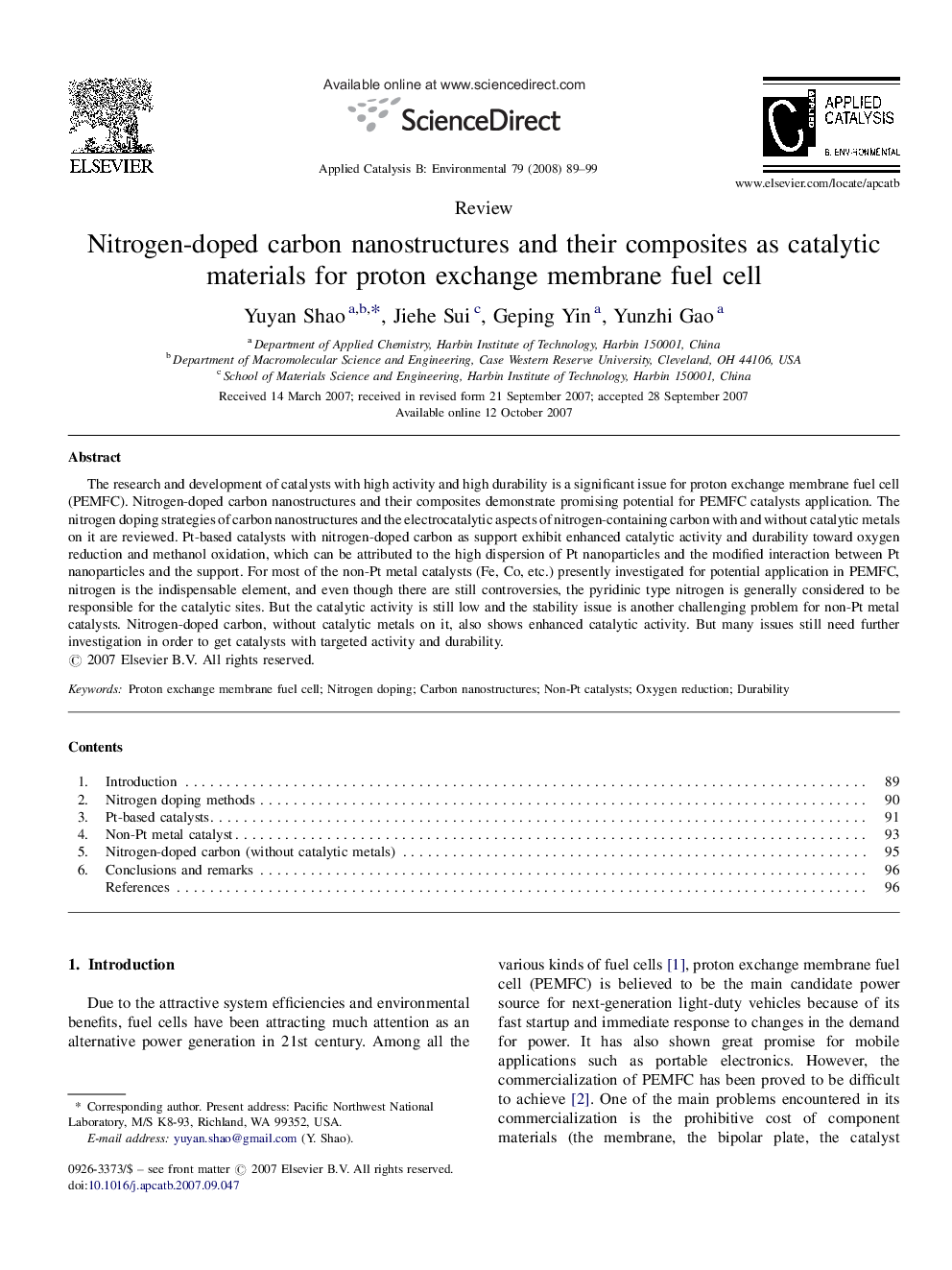| Article ID | Journal | Published Year | Pages | File Type |
|---|---|---|---|---|
| 48425 | Applied Catalysis B: Environmental | 2008 | 11 Pages |
The research and development of catalysts with high activity and high durability is a significant issue for proton exchange membrane fuel cell (PEMFC). Nitrogen-doped carbon nanostructures and their composites demonstrate promising potential for PEMFC catalysts application. The nitrogen doping strategies of carbon nanostructures and the electrocatalytic aspects of nitrogen-containing carbon with and without catalytic metals on it are reviewed. Pt-based catalysts with nitrogen-doped carbon as support exhibit enhanced catalytic activity and durability toward oxygen reduction and methanol oxidation, which can be attributed to the high dispersion of Pt nanoparticles and the modified interaction between Pt nanoparticles and the support. For most of the non-Pt metal catalysts (Fe, Co, etc.) presently investigated for potential application in PEMFC, nitrogen is the indispensable element, and even though there are still controversies, the pyridinic type nitrogen is generally considered to be responsible for the catalytic sites. But the catalytic activity is still low and the stability issue is another challenging problem for non-Pt metal catalysts. Nitrogen-doped carbon, without catalytic metals on it, also shows enhanced catalytic activity. But many issues still need further investigation in order to get catalysts with targeted activity and durability.
